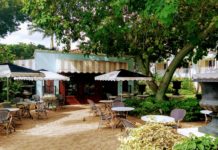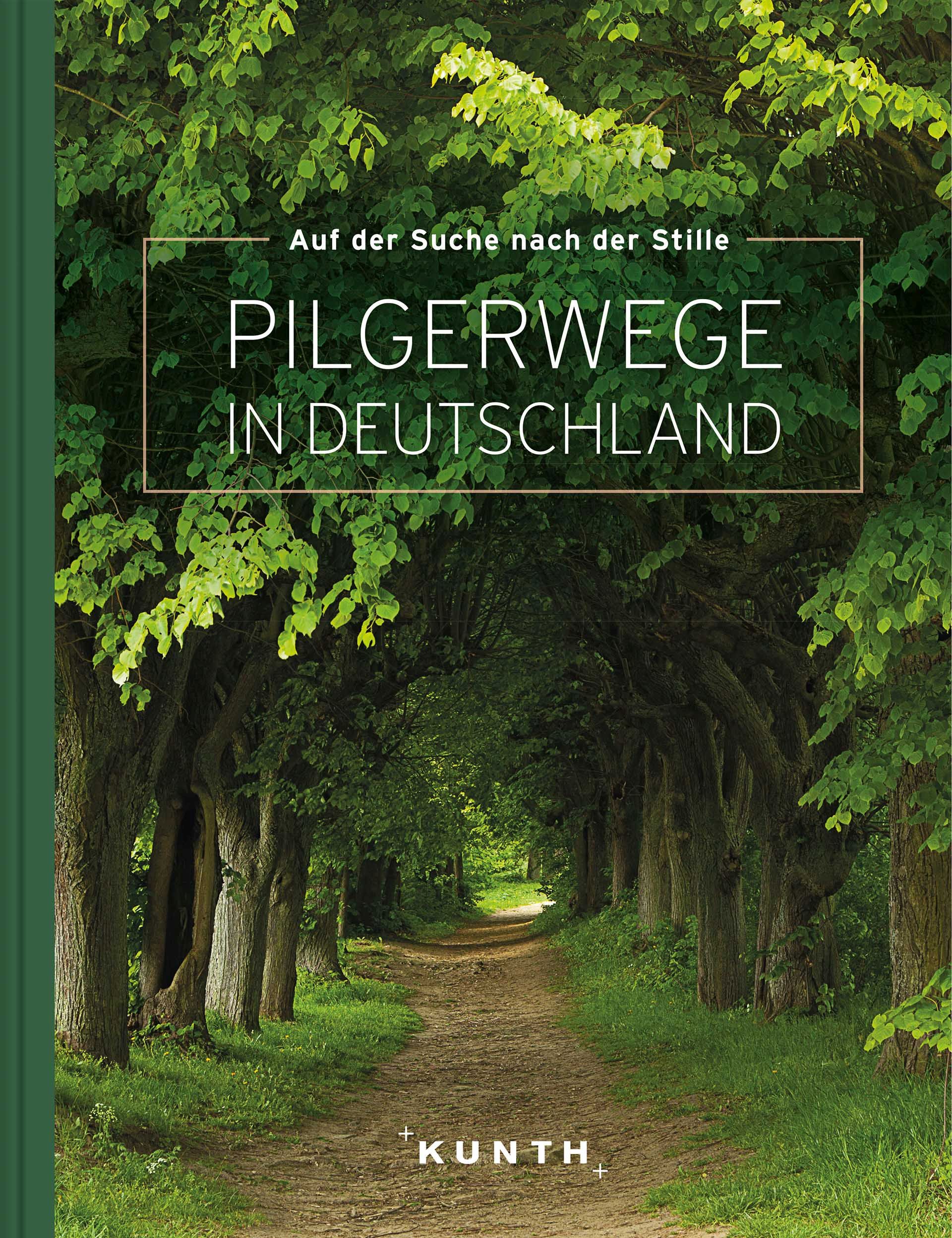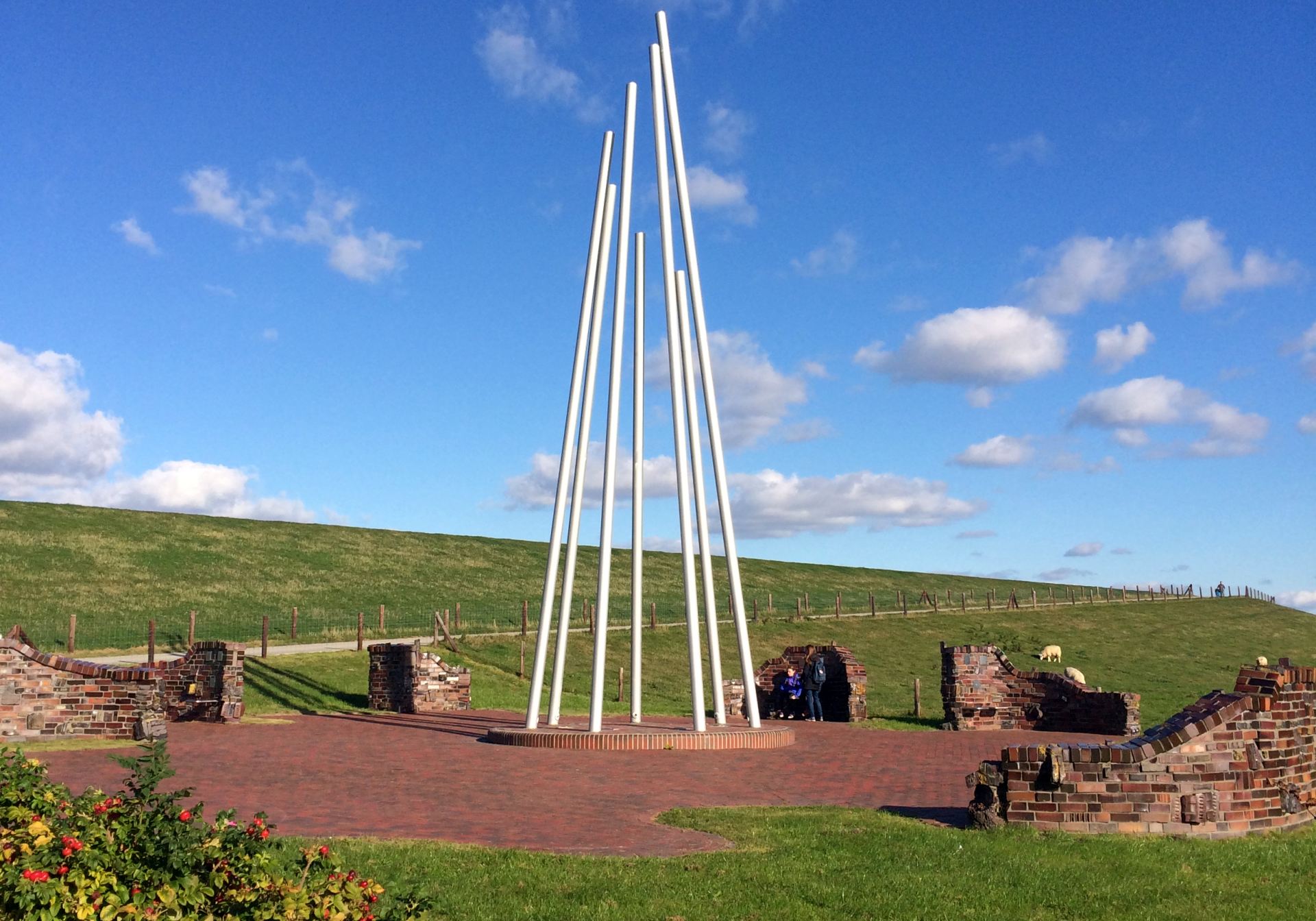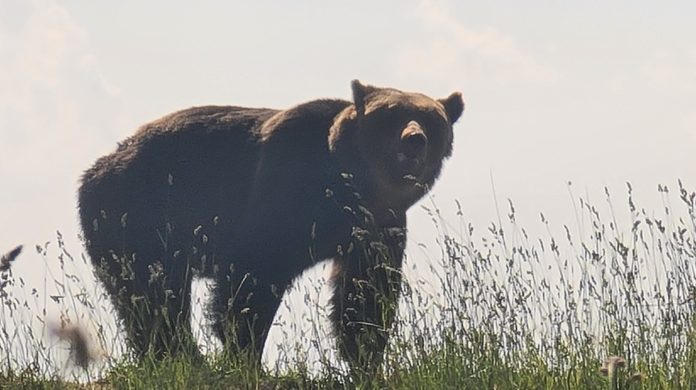
Sibiu, Sighisoara, Gebissdorf, Thorenburg, Weißkirch, Transylvania, Romania (MaDeRe). In the idyllic old town of the Transylvanian town of Sighisoara (28,000 inhabitants) we accidentally noticed a small white marble plaque, probably unnoticed by most tourists: „In aceasta casa a locuit intre anii 1431 – 1435 Vlad Dracul“. It is not difficult to decipher the Romanian text: A certain Vlad III lived in this house from 1431 to 1435. Dracul – the infamous vampire „Draculea“ (Son of the Dragon), portrayed in countless novels (notably by Bram Stoker in 1897) and numerous films, from Murnau’s „Nosferatu“ (1922) to Polanski’s brilliant vampire parody „Dance of the Vampires“ (1967). The legendary prince is said to have seen the light of day in Sighisoara – but it’s not certain. One thing is clear: Dracula is the epitome of evil, the uncanny – and that becomes abundantly clear in the immediate vicinity of that plaque: there is a modern bust of the aristocratic vampire that leaves nothing to be desired in terms of hideousness – and could actually inspire fear.
But wait: „The Land of Dracula“ – today’s Romania wants to thoroughly clean up with this image, although there are of course still plenty of tour operators who are still harping on the same string. Romania, which, like all European countries, had suffered from the Covid pandemic and had seen a significant drop in tourism, is now launching a promising new start: ecotourism. In close cooperation between the „Association of Ecotourism“ with the Austrian organization „Advantage Austria“ and Austria’s Embassy in Bucharest, a conference on the future of ecotourism in Romania was held in the Transylvanian town of Zabala or Zabola with numerous exciting contributions.

But the real attraction of this conference was the venue itself: Zabola Estate – a beautiful estate restituted to the Mikes family, the Counts dating back to medieval times. The medieval castle was converted into a Renaissance-style chateau in the 19th century, set in the beautiful English gardens that were fashionable at the time. Traumatic events followed, most notably the night-time expulsion of the family in 1949. But the shadows of the past have faded and since 2005 Zabola Estate took shape again under the family’s entrepreneurial heir, Gregor Roy Chodhury who grew up in Graz, the son of the Hungarian countess Katalin Mikes and a Maharajah from Bangladesh – as a small, fine luxury hotel with highly original and with perfect, artistically inspired tasteful designed guest rooms in different dimensions, from the huge bridal suite with terrace and view over the extensive gardens to the slightly smaller ones but still unique rooms. Alexander, the brother of the owner, is responsible for the exquisite artistic and interior design. You can have drinks at the very English-inspired bar, dine in the elegant dining room or, like us, on the garden terrace in warm summer weather. A spa with saunas and whirlpools is under construction.
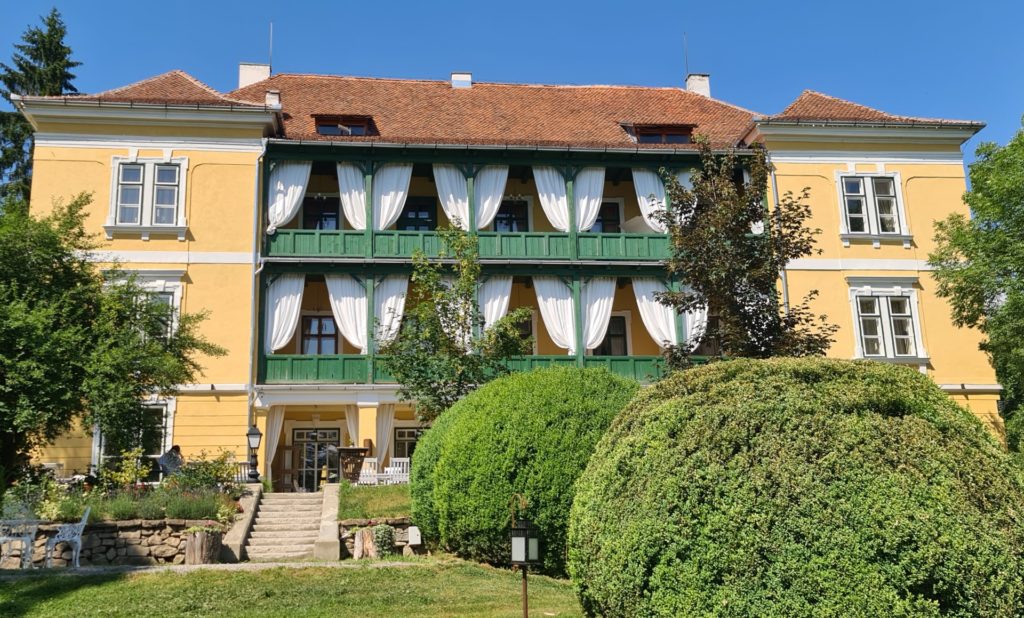
Mikes and his wife, a professional show jumper, perfectly meet the demand for eco-tourism: With their own stud farm, which is rigorously looked after by the horse expert. But above all with excursions to the bear forest. The adventure begins in an old Landrover, accompanied by the knowledgeable ranger Peter Levente: off we go up a steep dirt road, deeper and deeper into the dense forest. With a hand sign, Levente signals us to get out – and above all not to make any more noise. In a column of one, we continue along a path. We feel a little queasy: We know, even feel, that the bears are close, very close even – and that they can be very dangerous to humans, especially if you accidentally get between the mother and cubs.

A small wooden hut appears in front of us and the ranger signals us, one after the other, to enter – still silently. The hut has one thing in particular: a large pane of glass and in front of it, directly in front of us, almost within reach (if it weren’t for the pane), there are huge, shaggy bears – weighing tons, it seems, they move very very slowly.
They seem peaceful, because Levente has spread out food, and the mighty animals are completely devoted to eating – neither the glass pane nor the faces behind it, which they must see, distract them. Later it is explained to us that bears eat as much food as they can – probably in view of the long hibernation they will retire to in a few months. And since they always remember where they last found food, you can offer guests on bear safaris the bear experience with a hundred percent guarantee: it always works. And the thing has the additional appeal of the (not unjustified) thrill…
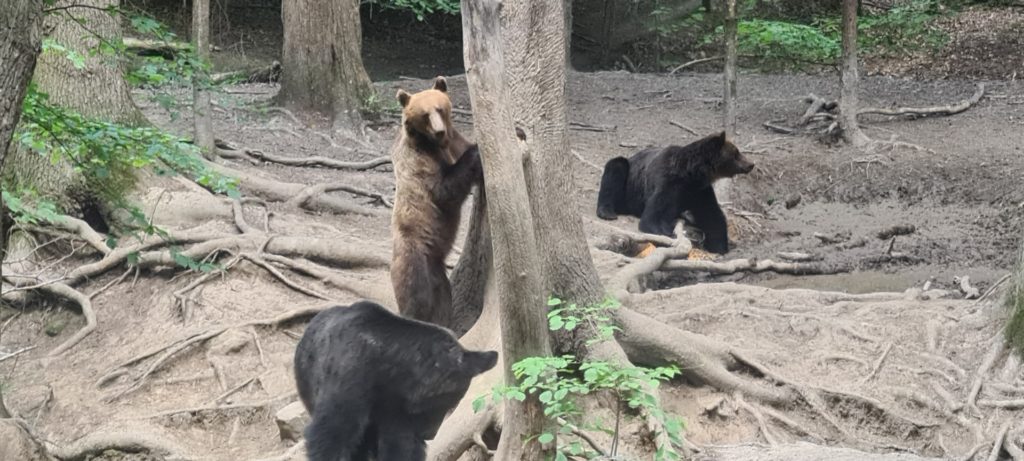
We are particularly enchanted by two cute young animals, which – always supervised by their mother – climb trees nimbly. This reminds us: if you are threatened by a bear, it is of no use to flee up a tree – the bears are many times superior to us. And running away is no use at all: bears develop a maximum speed of 60 kilometers per hour, we are told – you would have to flee in a car or on a motorcycle. And whether that works with the much-cited feigning dead, well – doesn’t sound very plausible…

The next day, Levente takes us into an underground bunker, barely visible from the outside, with a narrow hatch covered by a pane: here we are in fact in the middle of the bear feeding area. We persevere for hours without having much air to breathe in this narrow bunker, until suddenly the bear appears directly above us and poses for our souvenir photos – persevering was worth it…

We are told that there are 4200 bears in Romania (although the numbers vary). Romania has the largest populations of bears and wolves in Europe. In 2016, in the context of the relevant EU legislation, Romania banned the hunting of bears for trophies (the famous bear skin in front of the fireplace…) after the number of bears shot has increased year by year and just in 2016 with 550 bears shot (as well as 600 wolves and 500 big cats) had peaked. Well-heeled people from Austria, among others, liked to travel to Romania to hunt down a bear – thrill, prestige. They let the fun cost them up to 10,000 euros. But we learned that despite the ban on hunting, such amounts still make it possible to shoot bears.
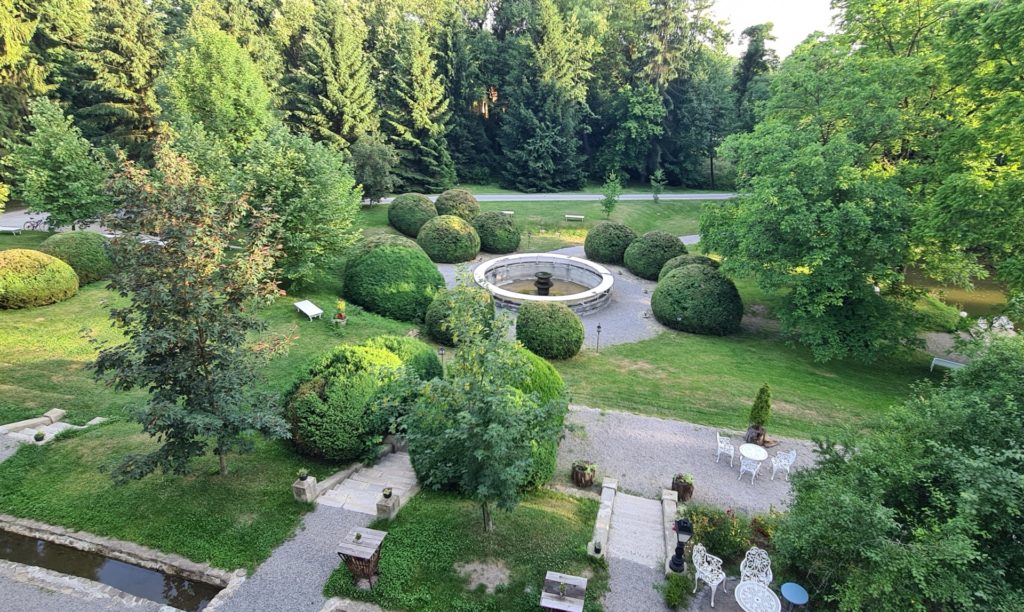
The offer from Zabola Estate to organize daily bear safaris under expert guidance at a very fair price is all the more commendable. Ecotourism must be bloodless – only in this way does it have the necessary attractiveness and the corresponding ethical foundation. Romania, and in particular Transylvania, which has an extremely attractive landscape and has not yet been discovered by tourists, has completely dedicated itself to the new trend of eco-tourism. Newly marked hiking trails are offered to visitors – footpaths that lead almost 1000 kilometers from Bukovina in the north with its rock monasteries worth seeing through 400 towns and villages to the Danube and which can be mastered in stages.
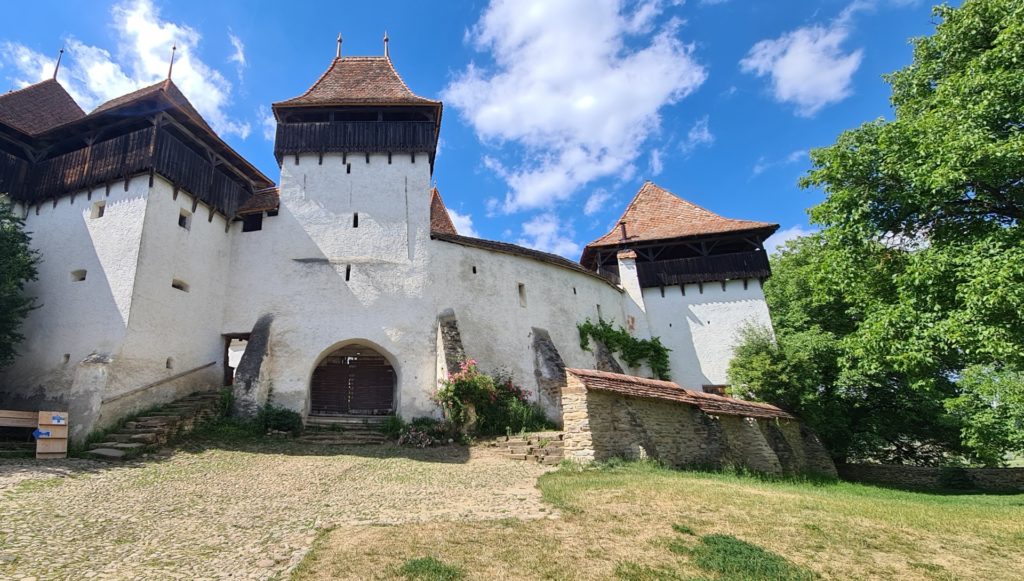
The fortified churches of the Transylvanian Saxons are famous – lured here in the 12th century by Hungarian kings for strategic reasons from the Rhineland – and one of the most beautiful of them stands in the Unesco World Heritage-seal village of Viscri. Prince Charles also bought one of the typical houses here, a pretty sky-blue building that is rented out to visitors. The foundation set up by the Prince of Wales strives to preserve the village culture in Romania, it supports companies that produce according to traditional craft methods – handmade roof tiles, for example.
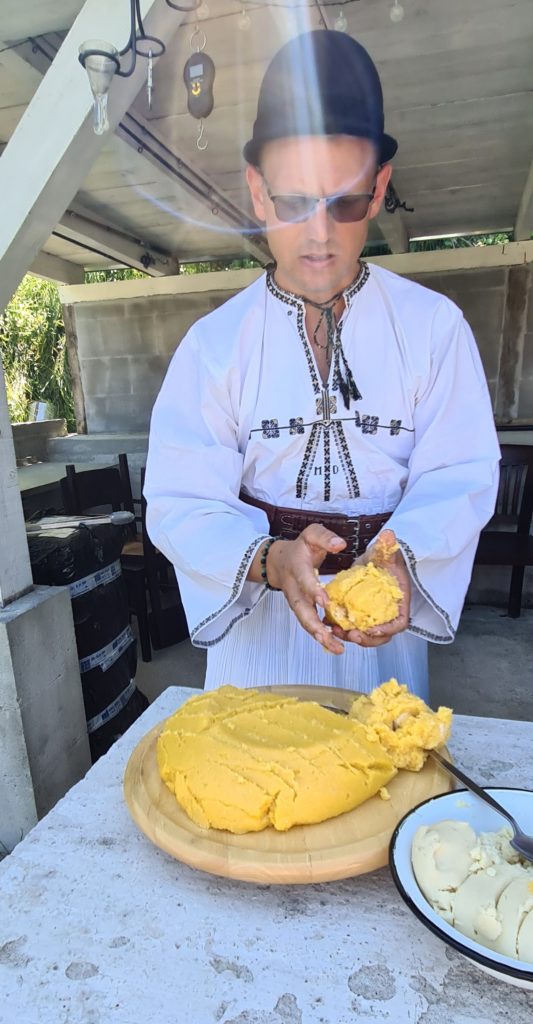
A completely different initiative was launched in the mountain village of Rau Sadului, in the „land of mountain huts“ (Tara Colibelor) to save the old shepherd’s huts, which are to be rented out as holiday homes for visitors in the future – ecotourism in its purest form. The Mayor Daniel Minea insists on preparing the local specialty on the open fire: „burduf“ cheese made from sheep’s milk is heated in polenta dumplings in the ashes of a fireplace. In the high-altitude resort „Portal“ near Sibiel, a manager who has started a new lifestyle has built a „place of rest for friends“ with original wooden bungalows between alpine pastures and forest – a restaurant for guests also operates here, which is a fusion between traditional Romanian cuisine and nouvelle cuisine.
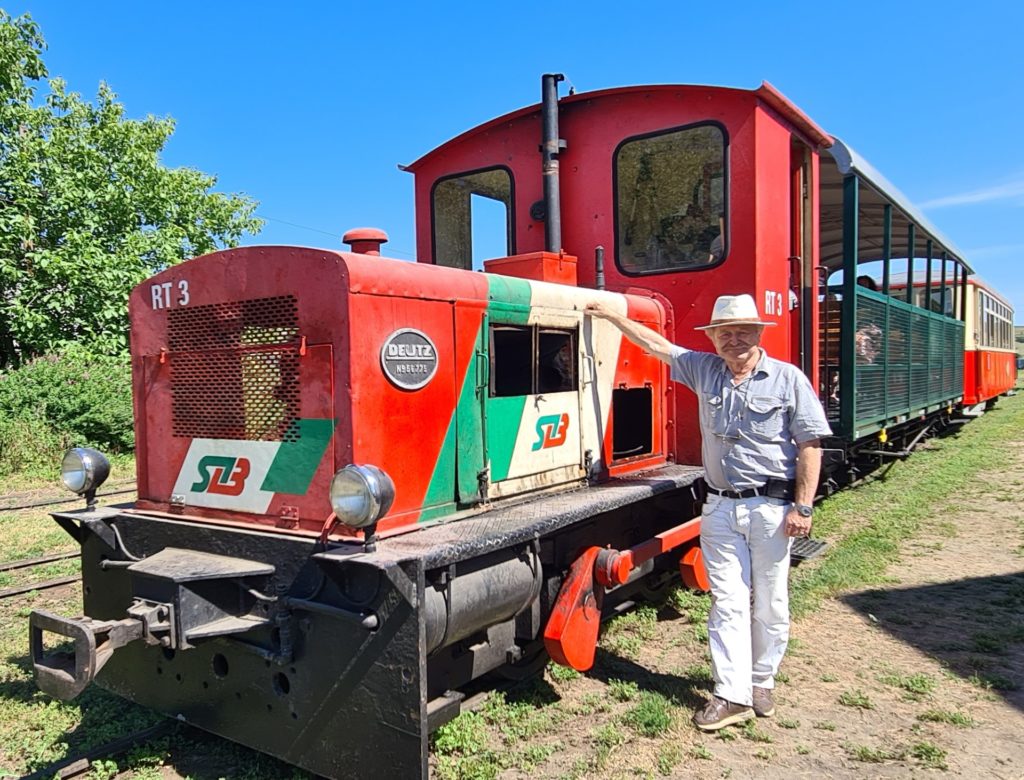
A particular attraction, worthy of being dubbed ‚ecotourism‘, is the delightful narrow-gauge railway from Holzmenge (Hosman) to Harbachsdorf (Cornatel) – a 45-minute flower-picking journey through ancient agricultural countryside, in where the hay carts are still pulled by horses. Railway nostalgics will no doubt be in awe at the sight of the bright red, tiny hundred-year-old „Deutz“ diesel locomotive number 56775…



